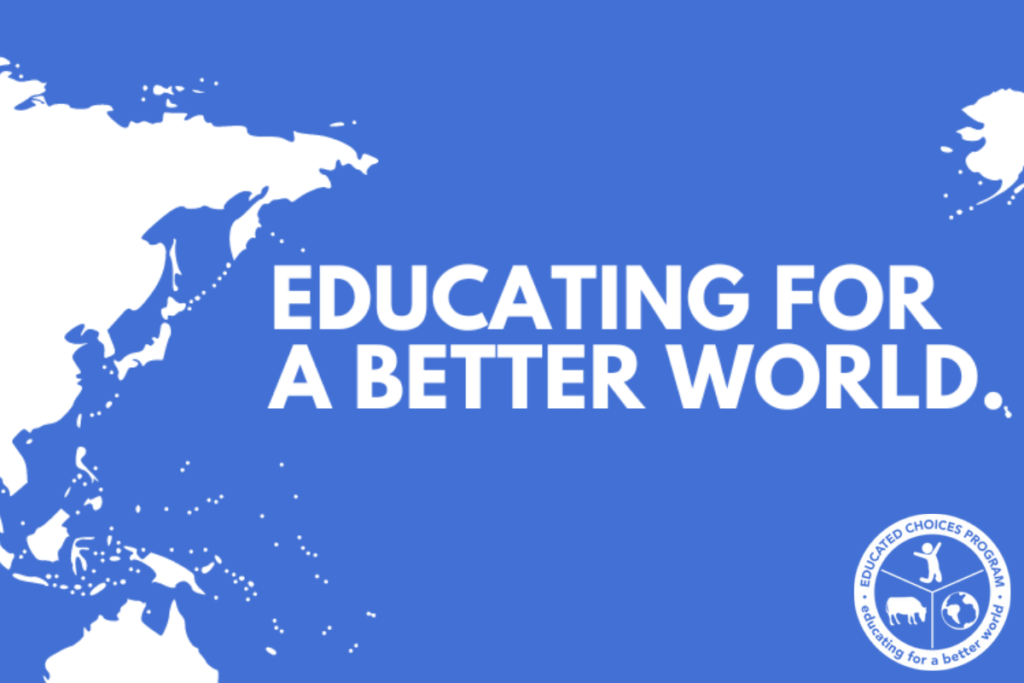
Healthful Eating – Providing a Supportive Food Environment
Increased Focus on Preventative Healthcare
Over the past two years, there has been a significant increase in the focus on health and fitness in the U.S. and beyond, much in part due to the impact of COVID. To be exact, a Preventative Care Study performed by digital health company Rally Health, Inc. found that 44% of Americans place more focus on health and wellness than prior to the pandemic. This shows a positive trend. However, an alarming number of people only think of preventative healthcare as getting an annual check-up. Fewer than half of the people surveyed reported exercising regularly and eating healthfully. Most people don’t truly understand the link between lifestyle choices, such as the food they eat, and the prevention of diseases before they occur. Many saw firsthand the increased impact of COVID on individuals with underlying health conditions, but they don’t know what steps to take to avoid developing those conditions themselves.
The Role Food Plays in Human Health
According to World Health Organization (WHO), the top three leading causes of death are Ischaemic Heart Disease, Stroke and Chronic Obstructive Pulmonary Disease. These all fall under a broader category called cardiovascular disease, responsible for about one-third of all deaths in the world. Most heart attacks are caused when the blood flowing through our coronary arteries to our heart is blocked, usually by a buildup of plaque. A stroke happens the same way, but the blockages occur in the arteries that carry blood to our brain.
These blockages occur when an artery has narrowed over time as a result of plaque buildup. This process doesn’t happen overnight but rather occurs over a long period of time. The disease process often begins when we are young and what we eat greatly contributes to how much plaque builds up in our arteries.
The plaques that block our arteries are primarily made up, in part, of fat. Saturated and trans fats in our diet can be harmful when consumed in high amounts. The vast majority of these saturated fats are found in animal products, and harmful saturated and trans fats are also found in processed junk food. The more of these products we consume, the more these fats build up in our bloodstream – and can then deposit along our artery walls. Harvard Medical School recommends limiting the intake of saturated fats – which are found in butter, cheese, red meat and other animal-based foods. Decades of sound science have proven it can raise your ‘bad’ cholesterol and put you at higher risk for heart disease.
The plaques that block our arteries are also made up of cholesterol. Cholesterol is only found in certain types of foods. And the only foods containing cholesterol are animal products – because all animals, including humans, produce cholesterol. While required for specific processes in the body, our bodies make all the cholesterol we need, so we actually don’t require any additional intake through our diet.
Also among the top ten leading causes of death worldwide are diabetes and certain types of cancers that are linked to food intake inefficiencies or surpluses such as excess sugars or inadequate consumption of fiber, among other things. Obesity, Osteoporosis, and other chronic illnesses also have strong ties to dietary choices. In short, a large majority of the chronic illnesses that plague our population and sadly lead to death could potentially be prevented and/or reversed by lifestyle changes such as improved diets.
Foodborne Illnesses
Our food system also played an important role during the pandemic. In addition to how it impacts individuals due to underlying conditions, food is linked to many public health concerns, such as zoological diseases and antibiotic resistance among humans.
Pathogens that are transmitted from animals to humans and cause disease are called Zoonotic Diseases. Examples of zoonotic diseases that have caused widespread illness and death in the last 100 or so years are the Spanish Flu, Avian Flu, Ebola, Swine Flu, SARS, Mad Cow Disease, and the COVID-19 pandemic. The continued use and consumption of farmed and wild animals put us at risk for future disease outbreaks. And 60% of all pathogens – like bacteria and viruses – that cause disease in humans originate in animals. A public health physician from the World Health Organization states that as long as people eat meat, there is going to be some risk of infection.
Viruses and bacteria are abundant on modern farms. These infectious microorganisms can spread rapidly in tightly packed sheds and barns and pose a public health risk to humans. It is common practice to regularly administer antibiotics and other drugs to farmed animals to prevent the spread of disease. In 2013, for example, it was estimated that over 118,000 metric tons of antibiotics were administered to farmed animals around the world. However, the overuse of antibiotics has led to antibiotic resistance, meaning the bacteria is able to thrive even in the presence of these medications. These resistant bacteria strains can affect humans through contaminated animal products, produce, cooking surfaces, and the environment through contaminated waste. According to the World Health Organization, “antibiotic resistance is rising to dangerously high levels in all parts of the world” and “is one of the biggest threats to global health, food security, and development today.”
Education is the Answer

With all of these scientific facts pointing to the link between human health and food, how is it that the majority of people don’t truly understand what healthy eating is and how much of an important role it plays in preventative care? The answer is a lack of education. Society is generally overwhelmed with marketing efforts promoting supposed “healthier” options and fad diets. They are confused by labeling on store shelves that claim to be “low fat” and “light.” What is missing is a solid foundation of education that teaches them food literacy, in which an individual is given the ability to understand food in a way that they develop a positive relationship with it and can navigate, engage, and participate within a complex food system. Society needs and deserves to have the ability to make dietary decisions that support the achievement of personal and public health.
Studies show that when given clear scientific evidence to show how food impacts their health and the world around them, the majority of people make positive changes to their diet. These changes are most often motivated by the desire to be healthier and have a longer “health span,” the part of a person’s life during which they are generally in good health.
Food service providers, school administrators, wellness program managers and restaurateurs can be part of the solution and can assist their customers and students in achieving their wellness goals. They all play a key role in providing the type of food environment that makes it possible for people to make healthier choices in the places they eat most often. The four most stated barriers to positive changes are associated with taste, followed by what foods are most widely accepted or available near them. This means that those who serve communities can eliminate those barriers by making healthful and plant-forward food choices delicious, convenient, and mainstream.
Along with this powerful opportunity comes one to educate their consumers and local communities about the benefits of making improved food choices. Food literacy programs that give people the opportunity to learn how food affects their bodies, coupled with decision-making tools to apply in real life, are proven to be the most successful in inspiring change. The education portion of these programs can consist of presentations and discussions to provide the foundation of knowledge upon which to make informed decisions. These can be part of a company or school wellness retreat or shown in a community venue. Education can also include the labeling of food in a way that helps them identify the best options easily while providing descriptions that sound enticing. For example, using the colors, textures and origins of dishes make an option sound interesting, and the label of “heart healthy,” “plant-rich,” or “no added sugars” reinforce it as a healthful and delicious choice. Ideally, these two approaches should be combined to allow people to make informed decisions and receive positive reinforcement when making future food choices. This not only helps to ensure the success of the plant-forward menu initiatives that food service providers are launching globally but also improves the health of their customer bases.
Dedication and Consistency
There is a rule of seven in marketing claiming that a message must be seen seven or more times before a prospective customer remembers it. This holds true in that most behavior changes do not occur overnight but rather one decision at a time until it becomes the new norm. Consistency in providing a positive food environment that offers educational resources and real-time decision-making tools can play a key role in creating a more healthful society and food system.
With an attendance of over 3700, primarily those from the food service industry, at the most recent Plant Based World Expo North America, up roughly 20% from the year before, it is evident that the demand for plant-based products to meet the needs of students and communities around the world is growing exponentially. This is promising news for the health of generations to come.
For more information about free food education programs available for your school, university, healthcare facility, company, or community, visit www.ecprogram.org or contact karyn.knox@ecprogram.org.


